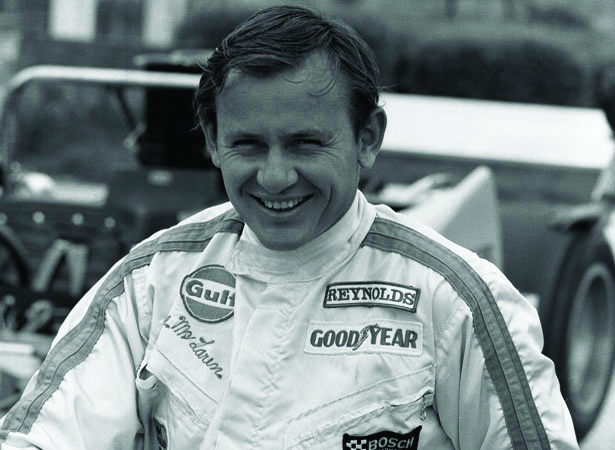Let’s face it, from a Kiwi point of view or even the global Motorsport fraternity in general for that matter, there aren’t many names bigger than that of Bruce McLaren. His list of trophies and accolades are cabinet filling and his contribution to the sport has meant that his legacy will go on ad infinitum.
Born in Auckland, 30th August 1937, Bruce was the middle child and only son of Leslie (Pop) and Ruth McLaren. Having Perthes disease in his early childhood (a rare condition that affects the hip joint), meant that in 1948 Bruce spent two years in the Wilson home for crippled children, however, by the age of 15 he’d managed to gain his driving licence and subsequently attended his first race meeting that very same year.
Behind the wheel of his Austin 7 Ulster, McLaren competed in a gravel hill climb event at Muriwai and won the 750cc class, his first success of the many to come.
In 1958 Bruce won the ‘Driver to Europe’ scholarship and was awarded £1000 to race in Europe. The very next year the impressive youngster won the Formula 2 Championship. Also, that same year, 1959, McLaren won the US Grand Prix at Sebring and in doing so, became the youngest driver ever to win an F1 GP (he was only 22 years and 104 days old). It was a Guinness World Record that stood for the following 44 years.
From there on in, his Podium finishes began to rack up thick and fast. A win at the 1960 Argentine GP and a 2nd in the F1 Championship. In 1961, he ‘won’ the hand of Patricia Broad in marriage and the next year Bruce secured a win at the Monaco GP and came 3rd in the World F1 Championship. In 1964 he won the New Zealand GP and the Tasman Championship plus he designs and builds the first McLaren Sportscar – the M1. Topping this off, 1966 Bruce won the Le Mans 24 hour with fellow Kiwi Chris Amon and debuts his McLaren F1 car at Monaco.
1967 proved to be the start of a massive 5-year period for McLaren. He won the Sebring 12-hour, won the Can-Am championship in his ‘clockwork orange’ McLaren M6A and began the ‘Bruce and Denny (Hulme) show’ which saw the McLaren cars win 32 of 37 Can-Am races (1967-70). As if this wasn’t enough, in 1968 Bruce won his first F1 Grand Prix in a McLaren at Spa, Belgium.
From Pukekohe to Brands Hatch, Le Mans to F1, McLaren was consistently rated amongst the world’s top racing car drivers. However, tragically, on June 2nd 1970, McLaren died on the track while testing his new McLaren M8D at Goodwood. Reports say that the rear bodywork came adrift at speed and 32-year old Bruce McLaren crashed on the Lavant Straight just before Woodcote corner.
Gone but not forgotten, Bruce McLaren’s contributions to the development of motorsport technology lives on and so too, his recognition. In 1990 he was posthumously inducted into the New Zealand Sports Hall of Fame and in 1995, he was inducted into the International Motor Sports Hall of Fame.
Over his 17-year career, Bruce McLaren raced approximately 390 races with a sublime 40% success at finishing on the podium. He was an outstanding Ambassador for the sport and his legacy will continue to win hearts forevermore.
“To do something well is so worthwhile that to die trying to do it better cannot be foolhardy. It would be a waste of life to do nothing with one’s ability, for I feel that life is measured in achievement, not in years alone.” Bruce McLaren 1937-1970.

